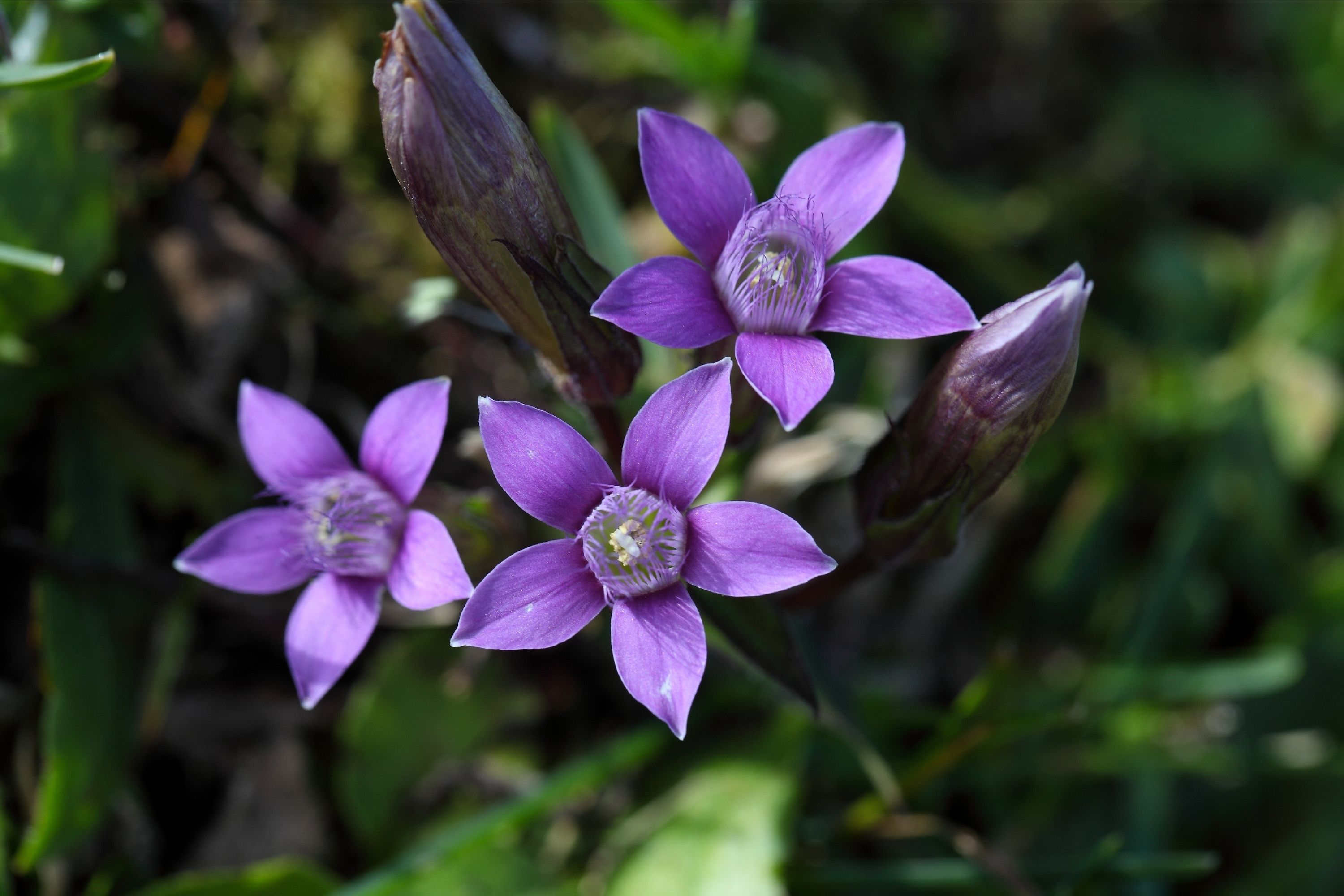German gentian
(Gentianella germanica)

Description
Gentianella germanica, commonly known as the German gentian or felwort, is a species of flowering plant belonging to the family Gentianaceae. This herbaceous perennial plant is native to Europe, where it grows in meadows, pastures, and open woodlands. In this article, we will explore the various aspects of Gentianella germanica, including its morphology, habitat, distribution, cultivation, and medicinal uses. Morphology: Gentianella germanica is a herbaceous perennial plant that can grow up to a height of 15-60 cm. It has a simple, unbranched stem that is erect and covered with fine hairs. The leaves are opposite, lanceolate, and up to 5 cm long. They are dark green in color and have a slightly serrated margin. The flowers are bright blue or purple, trumpet-shaped, and up to 2 cm in length. They bloom from July to September and are arranged in clusters at the top of the stem. The fruit is a capsule containing numerous small, black seeds. Habitat and Distribution: Gentianella germanica is native to Europe, where it can be found in meadows, pastures, and open woodlands. It prefers moist, well-drained soils and is often found growing in areas with limestone or chalk. It is also found in the Alps, where it grows at elevations of up to 3000 meters. Gentianella germanica is a common plant in central and southern Europe, but it is rare in northern Europe. Cultivation: Gentianella germanica is a relatively easy plant to cultivate and is suitable for growing in gardens. It prefers moist, well-drained soil and full sun or partial shade. It can be propagated by seed, which should be sown in the spring or autumn. The seedlings should be pricked out when they are large enough to handle and planted out in the garden in the following spring. Gentianella germanica can also be propagated by division in the autumn. Medicinal Uses: Gentianella germanica has been used for medicinal purposes for centuries. The plant contains bitter compounds that stimulate the digestive system and increase the production of gastric juices. It is used as a digestive aid and to treat digestive disorders such as dyspepsia, flatulence, and bloating. It is also believed to have anti-inflammatory and antibacterial properties and is used to treat respiratory infections and fever. Gentianella germanica is often used in combination with other herbs, such as chamomile and peppermint, to make herbal teas and tonics. Conclusion: Gentianella germanica is a beautiful and useful plant that is native to Europe. Its bright blue or purple flowers make it a popular garden plant, while its bitter compounds make it a valuable medicinal herb. It is easy to cultivate and can be grown in gardens, making it accessible to anyone who wants to enjoy its beauty or benefit from its medicinal properties. Whether you are a gardener or a herbalist, Gentianella germanica is a plant that is worth knowing about and growing.
Taxonomic tree:







